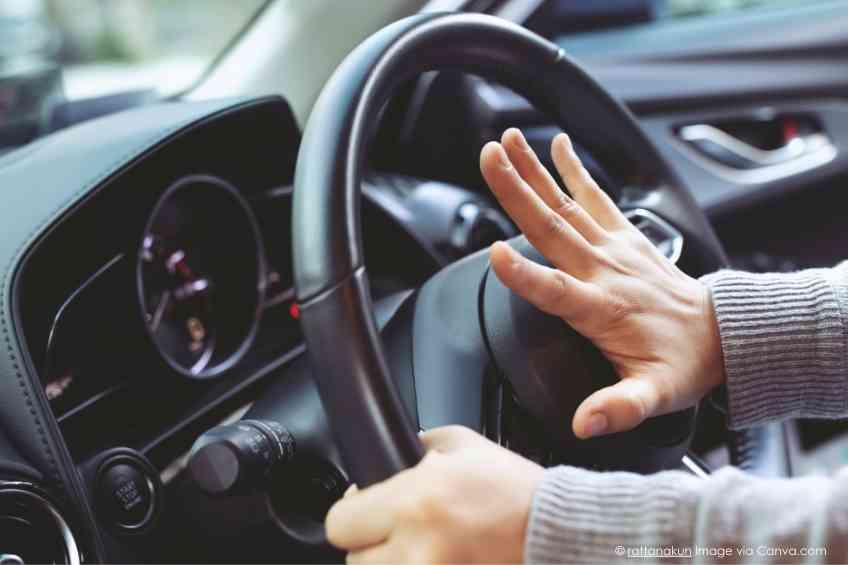Driving may seem like an inalienable right for Americans. It is, after all, an essential part of the culture. In fact, in most states, individuals can get their licenses at 16—and an awful lot of them do. Many are also driving older in life than ever, well into their 80s. Ultimately, it shouldn’t be surprising that more than 230 million Americans have their licenses, which equates to more than two out of every three people.
Unfortunately, this surge in drivers has also resulted in a growing number of road-related injuries and fatalities. And it’s not just the raw numbers that are on the rise, injuries per mile driven are also surging. What’s up with these growing dangers, isn’t technology helping and what can and is being done to improve road safety? These are all critical questions. Thankfully, Amy Artuso, senior program manager of mobility safety at the National Safety Council, connected with WellWell recently to lay out what’s driving these problems and how we can all move onto safer roads.
Give us a little background on what the National Safety Council is and its mission.
The National Safety Council is a leading nonprofit safety advocate in the U.S. We are more than 100 years old, first chartered by Congress to address safety in the workplace. Now, we focus on eliminating the leading causes of preventable injuries and deaths. We want to keep people safe from the workplace to any place.
How did you specifically get involved with this subject?
I started my career as what’s known as a child life specialist in pediatrics and working in an emergency department and surgical unit. I was seeing children and families after they were in crashes. I wanted to be on the more proactive side of things. I knew there were educational programs out there that helped families learn how to use their car seats correctly and provided families with car seats if they couldn’t afford one on their own. Fortunately, in the hospital that I was at, I was able to return to school for my master’s degree. I focused on public health and my background is predominantly in child passenger safety. I was honored to be selected on the National Child Passenger Safety Board, which is managed by the National Safety Council. Through this chain of events, I became an employee at the National Safety Council. That was more than ten years ago.
When we talk about mobility safety, are we talking generally about car safety? Does it go beyond that or is it just focused on that?
No, it does go beyond cars. We refer to vulnerable road users as pedestrians and bicyclists. It’s any form of transportation that would get you from A to B that’s mobile.
Has mobility safety made substantial gains in the last 10 or 20 years? Are we safer and more effective in terms of mobility safety now?
There are layers to that question and the answers. Technological improvements have certainly contributed to us being safer. We also have enforcement and lessons learned that contribute to education and resources. We need all three to advance safety. Right now, traffic fatalities are at a historical high. If you look at before the pandemic in 2019 and compare it to last year, with deaths per miles driven, we saw a nearly 22 percent increase. For some reason, traffic fatalities are increasing, but we have advancements in technology and education that I think would be safer. Some of that comes down to human factors where the safety technology is only as good as the people using it.
You’re saying that there are more fatalities per mile driven?
During the pandemic, there were less people on the roads. It seems the people who were driving thought that they could be more reckless. Speeding has increased, and some leading causes of crashes are speeding, distracted driving and impairment. With less people on the road, those who were may have engaged in more risky behaviors.
Any idea why that may be happening?
There’s a widespread belief that crashes only happen to other people. People tend to think that they’re invincible. We know this about teenagers, but it’s not exclusive to teenagers. Roadway fatalities are a leading cause of preventable injuries and fatalities or deaths across all age groups through age 25. If motor vehicle crashes are not the leading cause in an age group, often it is the second leading cause of preventable injuries and deaths for a particular age.
Is it the information that’s getting out that is maybe focused too narrowly on infant car seats?
I’ve heard people say, oh, I don’t need to use car seats. That’s just a way for the government or companies to make money. No. We know car seats work for infants, according to the National Highway Traffic Safety Administration. They say properly used car seats increase safety for infants by 71 percent and for toddlers ages one to four it increases their safety by around 54 percent. It’s just tried and true. We know that these devices are helping to keep our youngest passengers safe. There’s a lot of crash testing involved with product development, whether car seats or vehicles and even the crash test dummies model males. There’s a higher risk involved right from the start for females before you even consider children, let alone infants. The car seats, booster seats and seat belts need to be understood how to use them correctly, and when used correctly, they do go a long way in advancing safety.
What’s the use of car seats? Is it growing?
It’s more common to be using car seats. It’s a relatively new technology when you compare car seats to seatbelts. It’s like putting a puzzle together, and it’s very challenging for people. You have to know what the instructions are for your car, for your car seat, and what’s best for your child based on their size, height, weight and developmental level. There is a national certification out there and nationally certified child passenger safety technicians available often to help families at no cost to help put that puzzle together to keep their children as safe as possible. It is a patchwork system in the US from state to state. The child passenger safety laws are different, but in a crash, the laws of physics are going to win out.
Do all states have child safety seat laws even if they vary?
They do. Some states require infants to remain rear-facing in their car seats through age two. Others don’t. There are different ages that states require children to remain in booster seats. Those are the two areas with the greatest variability right now. It is something that has changed over time. We want to keep children in car seats until they fit in a seat belt correctly, and that’s even going to be different from vehicle to vehicle.
What about enforcement of these regulations? Do we see a growing awareness or local authorities moving to enforce these regulations?
Yes, enforcement is a key piece of the puzzle. A lot of child passenger safety technicians I know are police officers and that’s a direct result of their experiences and what they’ve seen at crash scenes. They understand the need for this use now. When roadside, it’s hard for officers to tell how old they are just by looking at a child, but they understand the different phases of child passenger safety, rear-facing car seats versus forward-facing car seats, booster seats and then transitioning to a seat belt. We don’t like to say graduate because we’re advocating for children to remain in each of those phases as long as possible for their safety. There’s an awareness out there. Sometimes, it’s primary enforcement versus secondary enforcement. In some states, if it’s a primary enforcement law, law officers can pull over a vehicle for that reason.
Are there groups that are at particular risk from car safety? Are there certain demographics that we see and that’s a problem area?
Yes, one area we focus on in the mobility safety programs at the National Safety Council is teenagers or new and novice drivers. Historically, car crashes are the number one cause of preventable death for teens because they’re new drivers. They’re not as experienced. However, a trend we’re seeing is teenagers aren’t getting their driver’s license. We’re delaying that process, and now we reference that group as new and novice drivers. They could be older than 16, it could be 18 or 21.
And why do you think they’re delaying it?
There are more resources available now. Children are seeing their friends through their phones or video chatting. They also have more resources, such as rideshare vehicles like Uber and Lyft. There are differences geographically, whether we’re talking rural or urban, but there’s not as big of a need to physically be somewhere else to be socially engaged like there used to be.
It seems like everybody uses a seat belt now. Is that the case or not?
I do not think it’s as common for adults in rear seating positions. It is a trend where it’s not registering that seatbelts are just as important if you’re in a rideshare vehicle or if you’re in the back seat of someone else’s car, and it is just as important. No matter which seat you’re sitting in, every passenger should be correctly buckled up. Especially in newer vehicles, all seating positions tend to have lap and shoulder seatbelts, and that’s considered the safest. When it comes to those lap belts, people may be wearing their seat belts, but then we see people putting the lap belts behind their back or under their arms, and that’s particularly dangerous. We want to encourage people to use their seat belts every time but use them correctly. They should be across the chest, not touching the neck. And seat belts protect people using the strongest points of our body. They spread out crash forces over a wider space. That’s part of what seatbelts help do to prevent injury. It’s at the two hip points, which are a strong point of the body and across the chest. When people are putting the belt under their arm, they’re increasing the chance of injury in the soft parts of the body, or when they put it behind their back, they’ve just removed all the upper body protection that the seat belt provides.
What are the other ways that people need to think about to protect themselves?
Three of the leading causes of crashes are speeding, distraction and impairment. It’s not just drinking; it is also the opioid crisis and substance abuse. Fatigue is a form of impairment, like falling asleep at the wheel. When it comes to distraction, there are three components to that. There are so many things that qualify as distractions. To try and simplify it when you are driving, you should keep your eyes on the road, your hands on the wheel and your mind focused on driving. Take cell phones as an example. People think it’s safer to use hands-free versus handheld. While that is hands-free and keeps your hand on the wheel, it’s still taking your mind off driving. There are data and studies to support how much less people see while they’re driving when their mind is engaged in conversation.
How is that different from talking to people inside the car?
In theory, people in the car are also seeing what’s going on around you and can help identify risks. Whereas the people that you’re talking to are completely separated. Children can also be a distraction, but we also have a role as parents to teach our children. We are role models for when they grow up and start driving and also teach them what it means to be a passenger in a vehicle and give them jobs or roles to help with safety.
What would those roles be for those younger passengers?
They can help make sure that everybody’s buckled up and people are not using their phones while driving. Then, not being a distraction and knowing they should sit in their seat, and this is not the time to be super active.
Most accidents happen within a mile or two of someone’s home. Is this a problem and is that true?
It is true and the last statistic I know is within 3 miles of the home. You let your guard down when you’re closer to home. It’s almost like a relief, and you’re almost to the finish line. Maybe people’s defenses are down because they think it’s safer because they’re not going as far.
Do these new technologies focus on safety?
Yes. It could be adaptive cruise control, adaptive headlights or anti-lock braking systems. You know, the automatic parallel parking. A lot of people are probably going to appreciate the automatic parallel parking and the braking systems. Advancing those safety features is meant to help drivers. Some technologies are emerging that are more for convenience, but our focus is on safety features improving.
Where do you see technology going in the future?
I think that technology is going to continue to evolve, and a lot of it is based on data and lessons learned. In theory, experience helps improve safety and that’s going back to new and novice drivers more at risk. You have a lot of experience with parallel parking, so you’re more comfortable with it, whereas others don’t have that experience. This technology could help them. The technology could have a big improvement on children in hot cars. Even if you don’t have young children in your home, it is important to always lock your vehicle before you walk away if you have children in your neighborhood. The leading circumstance for children injured or dying due to pediatric vehicular heat stroke is inside a parked vehicle becoming deadly hot. Children being unknowingly left or forgotten in a vehicle and gaining access to unlocked vehicles is the second leading scenario in that risk area. If you’re a vehicle owner, I can’t emphasize enough how important it is to lock your vehicle before you walk away. There are technologies available that could help identify children, people with disabilities or older adults. The driver sometimes knowingly leaves people in the car because they think, oh, I’m just going to be a few minutes, and then it could take longer. People don’t understand how quickly the inside of a vehicle becomes dangerously hot, especially for children. Their bodies don’t regulate heat as well as adults. They heat up three to five times faster than an adult, and temperatures, on average, increase in the car by almost 20 degrees in 10 minutes.
Is it pronounced in cold weather?
It is, and it has to do with vehicle heating dynamics because of how UV rays interact with the windows in a vehicle and the heating mechanism that takes place inside the vehicle. Because of that interaction, it doesn’t matter what the temperature is outside of the vehicle. It’s about 20 degrees every 10 minutes. So, if you’re starting at 56 degrees outside, you have longer before life-threatening temperatures inside the car heat up, whether it’s winter or summer. There are definitely more deaths in the summer, but one child is too many, especially because 100 percent of these deaths are preventable.
But what are some of the biggest misconceptions about car mobility?
Driving is the most dangerous task. People living in the U.S. do it every day and traffic fatalities are preventable. There are vulnerable road users of pedestrians and cyclists. The current transportation system doesn’t prioritize safety for those outside of motor vehicles. We all contribute to safety. Pedestrians, cyclists and motorcyclists all saw increased deaths last year and it’s not equitable across all populations. Technology is definitely part of it helping people understand what they can do to keep people safe.
Are there other concerns for mature drivers creating additional risks?
There’s a reflex, the time it takes you to respond to something. It is the eyesight and making sure that older adults are positioned correctly and can see through the mirrors. We want to make sure people are being as safe as possible. When it comes to safety on the road, we need to make sure that older adults are still comfortable in their seating positions. They should be buckling up. They should be adjusting their mirrors and be able to comfortably reach the steering wheel and brakes without putting themselves in danger. There is discussion out there if there should be different testing protocols or how frequently people can renew their driver’s licenses and what’s involved in that process. That’s not an area of expertise for me, but there are things to take into consideration.

About Amy Artuso
Amy Artuso is the senior program manager of mobility safety at the National Safety Council. It is a position she has held for a decade, giving her unique insights into the variety of issues involved in enhancing road safety for drivers, their passengers and pedestrians.
To learn more, please visit the National Safety Council.













